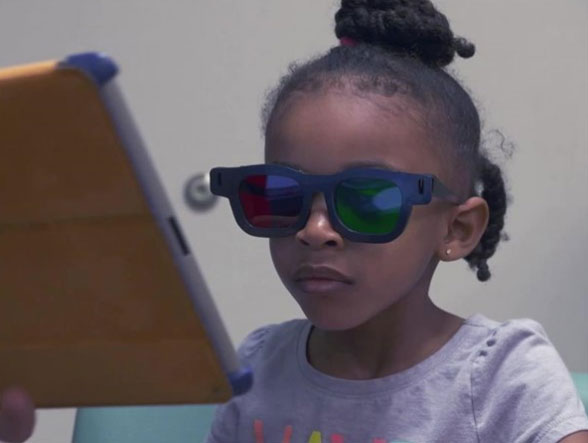iPad Game Helps Treat Lazy Eye in Kids

Kids with lazy eye — or amblyopia, the medical term for the condition — may improve their vision by playing a specially designed iPad game, a new study finds.
What's more, kids in the study who played the game experienced greater improvements in their vision after just two weeks, compared with those who received the standard treatment for lazy eye, in which the child wears a patch over his or her "good" eye.
The findings suggest that treatments for lazy eye that require children to use both eyes, as the iPad game does, "may yield faster gains than patching," the researchers, from a nonprofit eye research institute called the Retina Foundation of the Southwest, in Dallas, wrote in the Nov. 10 issue of the journal JAMA Ophthalmology.
Children with lazy eye don't see as well with one of their eyes as they do with the other, and this weaker eye may wander from side to side, according to the Mayo Clinic. About 3 percent of U.S. children have a lazy eye.
The standard eye-patch treatment helps to stimulate the weaker eye in kids with lazy eye. Although most children have improved vision after this treatment, it doesn't always work, and some kids experience a return of their lazy eye after the treatment, the researchers said. In addition, children with lazy eye may have trouble using both of their eyes together, so treatments that allow them to use both eyes may work better than those that allow them to use only one of their eyes (as is the case with eye patching), the researchers said.
In the new study, the researchers randomly assigned 28 children with lazy eye to either wear an eye patch or undergo treatment with the iPad game. In the game, called Dig Rush, children control characters who are mining for gold, and the goal is to return pieces of gold to a cart as fast as possible while avoiding obstacles, such as monsters. [7 Ways to Short-Circuit Kids' Mobile Addiction]
To play the game, the children wear special glasses that affect how the game looks to each eye. The stronger eye sees some elements of the game (such as the gold cart) in reduced contrast, while the weaker eye sees other elements (such as the miner characters) in high contrast.. Both eyes see elements of the background (such as rocks) in high contrast.
Get the world’s most fascinating discoveries delivered straight to your inbox.
The children in the iPad group played the game for 1 hour a day, five days a week, for two weeks. Those in the eye-patch treatment group wore an eye patch for 2 hours a day, seven days a week, for two weeks.
After two weeks, the children in the iPad group were able to read an average of 1.5 more lines on a letter chart than they could before the treatment, while those in the eye-patch group could read 0.7 more lines on the letter chart, on average, than they could before the treatment.
About 40 percent of the children in the iPad group reached 20/32 vision or better (which is near-normal vision), compared with just 7 percent in the eye-patch group.
After two weeks, the children in the eye-patch group switched over to the iPad group, and all of the children played the game for another two weeks. After four weeks, there was no difference in vision between the two groups, the researchers found.
However, it's still not clear whether the vision improvements in the children after they played the game will last over the long term, the researchers said, so future research is needed to look at that question.
Original article on Live Science.

Rachael is a Live Science contributor, and was a former channel editor and senior writer for Live Science between 2010 and 2022. She has a master's degree in journalism from New York University's Science, Health and Environmental Reporting Program. She also holds a B.S. in molecular biology and an M.S. in biology from the University of California, San Diego. Her work has appeared in Scienceline, The Washington Post and Scientific American.



